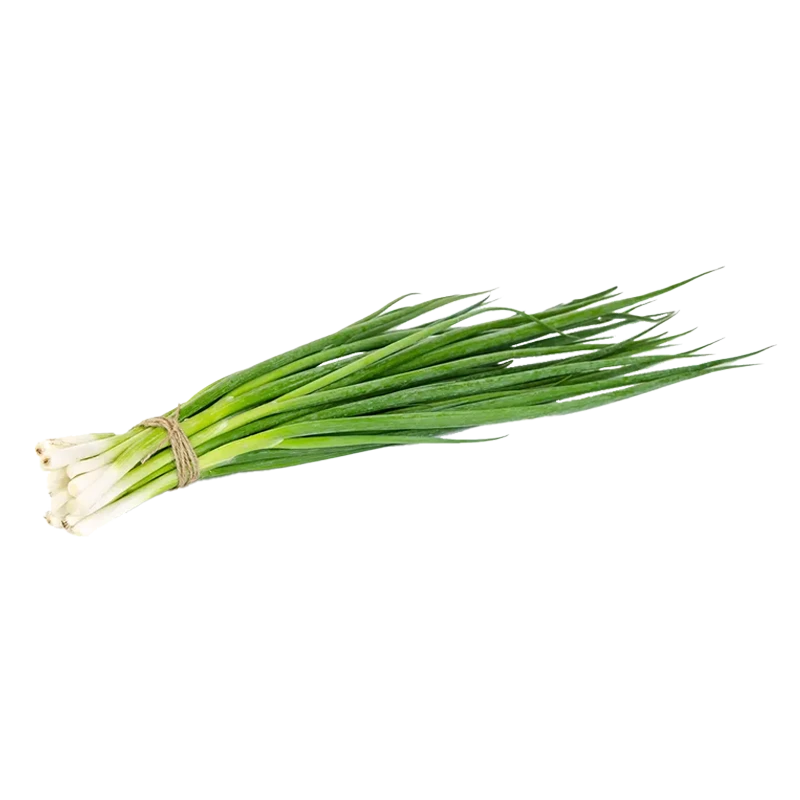Green Onion — Nutrients, Health Benefits, And Shopping Tips

Written by Listonic Team
Last update on September 4, 2024
Nutrition facts
Nutrition facts
Amount per 100 g
Calories
🔥 32 kcal
| Nutrition per: 100 g | Value | % Daily Value* |
|---|---|---|
| Carbs | 7 g | 2.55% |
| Fiber | 3 g | 10.71% |
| Sugars | 2 g | 4% |
| Glycemic Index | 10 | - |
| Protein | 2 g | 4% |
| Sodium | 16 mg | 0.7% |
| Total Fat | 0 g | - |
*The % of Daily Value (DV) tells you how much a nutrient in a serving of food contributes to a daily diet. 2,000 calories a day is used for general nutrition advice.
32
🍏 Low-Calorie Foods
10
🟢 Low Glycemic Index
Did you know?
Health benefits
- Rich in antioxidants such as quercetin, which help protect the body from free radicals and reduce inflammation.
- Supports digestive health by stimulating the production of digestive enzymes.
- Contains essential vitamins and minerals such as Vitamin C, Vitamin K, and folate, which support overall health and well-being.
- Low in calories, making them a nutritious addition to a balanced diet.
Health risks
- Potential for digestive discomfort such as gas or bloating when consumed in large quantities, particularly for individuals sensitive to onions or high-fiber foods.
- Potential for allergic reactions in some individuals, causing symptoms like itching, swelling, or difficulty breathing, particularly those allergic to other alliums (e.g., garlic, onions).
- Risk of contamination with harmful bacteria or pesticides if not properly washed or sourced from a reputable supplier.
- Potential for nutrient loss if green onions are overcooked, reducing levels of vitamins and antioxidants.
How to choose green onion
Green onions, or scallions, should have crisp, bright green tops and a firm white base. They should stand upright when held. Sniff the green onions to ensure they have a fresh, sharp scent.
Do not use green onions that have wilted tops or slimy bulbs, as these are indications they are no longer fresh. Good green onions should add a mild, peppery flavor to dishes without being overpowering.

How to store green onion
Green onions should be stored in the refrigerator. Place them in a jar with a little water and cover loosely with a plastic bag to maintain freshness. Properly stored, green onions can last up to a week.
Poor storage practices can cause green onions to wilt and lose flavor. Washing them before storage should be avoided to extend their shelf life. Keeping them slightly ventilated helps maintain their crisp texture and vibrant flavor, perfect for garnishing and cooking.
✅ Extra Tip
How long does it last?
Green onions can last for 1-2 weeks in the refrigerator. To keep them fresh, store them in a plastic bag or container with a paper towel to absorb excess moisture. For best results, keep them in the crisper drawer of the refrigerator.
What to do with leftovers?
Leftover green onions can be used in a variety of dishes to add a fresh, mild onion flavor. Chop them and sprinkle over salads, soups, or pasta dishes as a garnish, or mix them into scrambled eggs, omelets, or frittatas for a flavorful breakfast.
Use green onions in a cream cheese or sour cream dip, or blend them into a butter to spread on bread or melt over grilled meats. If you have a lot of green onions, consider making a batch of scallion pancakes by mixing the chopped onions into a batter and frying until golden. Green onions can also be used as a topping for potatoes, whether baked, mashed, or roasted, or added to a stir-fry with vegetables and rice. For a quick snack, try sprinkling green onions over cottage cheese or mixing them into a yogurt-based dip for vegetables.
👨⚕️️ Medical disclaimer
Discover products from other categories
Listonic Team
Fact-checked
Our editorial team checked this article to make sure it was accurate at the time of publishing it.
Get the top-rated shopping list app on your phone!







